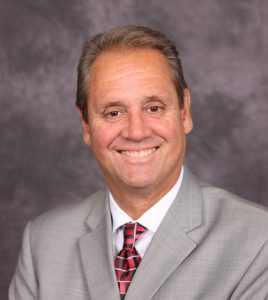By Eugene E. Valdez AKA The Loan Doctor
If you are the CEO of a small privately owned company the affordable sources of finance available to you are limited as compared to a medium to large publicly owned company.
General financing options include: (all range of interest rates)
- Commercial banking loans for all purposes ( very strong companies)
- Commercial banking loans with an outside third party guarantor such as the SBA federal loan guarantee, California state loan guarantee or California’s Cal Cap program ( for weak to moderately strong companies)
- Equipment Leasing companies
- Commercial Finance Companies that provide lines of credit secured by ARs & Inventory on a formula basis ( non-bankable companies, rates are high)
- Factoring companies that purchase your ARs ( non-bankable companies, fees are high)
- Loans from non-bank intermediaries , ( funded by banks, SBA or Department of Treasury, rates are high)
- CEO personal loans made to the company
- Vendor Credit ( if your vendors will approve you for net 45- 90 day terms)
- Private investors ( Non-equity , no ownership, rates high)
- On Line Lenders (on bankable companies, rates are ridiculous!)
- Business Credit Cards, ( rates are excessive)
One of the options not listed above which is often overlooked and which is the topic of this week’s article is after tax RETAINED PROFITS. The reason retained profits is often overlooked is that CEOs want to limit the amount of taxes they have to pay and as such they often report profits that are much less than their business actually earned. The result is their stockholder’s equity does not grow much over time and their leverage stays the same or get worse over time. Retained profits can be put into the business checking account to be used to purchase inventory, carry high levels of AR, and fund higher levels of payroll and or purchase new machinery and equipment at a later date.
To illustrate let me provide an example. Let’s say you have a business that is doing $5 million in sales and under normal circumstances you will report a net margin of 5.00%. To limit your taxes you and your CPA develop a legal strategy where you manipulate the timing of revenues and expenses such that you report a 1.50% net margin instead of a 5.00% net margin. Let’s say you are an S corporation and you’re in a 30% tax bracket. Let’s say this scenario plays out for three consecutive years.
5.00% scenario:
Net profit before taxes: $250,000, ($5MM * 5.00%)
Taxes needed to be paid: $75,000, ($250M * 30%)
After Tax Retained Profits added to Equity: $175,000
AT Retained Profits added over three years: $525,000 ($175M * 3 yrs.)
1.50% scenario:
Net profit before taxes: $75,000 ($5MM * 1.50%)
Taxes needed to be paid: $22,500, ($75M * 30%)
After Tax Retained Profits added to Equity: $52,500
AT Retained Profits added over three years- $157,500 ($52.5M * 3 yrs.)
Three summary: 5.00% margin vs 1.50% margin
Extra taxes paid = $157,500, ($225,000 – $67,500)
Extra retained profits kept in company= $367,500 ($525,000-$157,500)
Let’s say at the conclusion of the third year a current customer or prospect provides you an opportunity to grow your business by 10%. To gear up for this new business you determine you will need to buy more inventory, more equipment and hire two new key employees. You estimate your expansion will cost $350,000. Under the 1.50% net margin scenario you are short on cash and thus you decide to take out a 3 year bank loan at 7% interest. The total cost of the bank loan including interest, loan fees and other charges (outside accounting fees) is projected at $85,000 over the three year period. In addition to this total cost you will have to deal with the bank’s financial reporting and covenants. Lastly your loan will have a prepayment penalty clause and your monthly payment will be around $11K for the next 36 months.
Under the 5.00% net margin scenario you have plenty of cash on hand and thus decide to finance your $350,000 expansion needs with your own money. You use the extra $525,000 you have squirreled away over the last three years and politely tell the bank, thanks but no thanks. Finally, by not borrowing you also save $85K over three years by not having to pay interest, loan fees and other charges and most importantly you do have to deal with an $11K a month loan payment.
Isn’t this a better option for you?
Eugene Valdez is a 40-year veteran of business/financial management and owner of The Loan Doctor, a full service business loan consulting firm based in Upland. He can be reached at 909-230-0024 or evaldez@theloandoctor.loans. Like and follow him on social media Facebook, LinkedIn.
 IE Business Daily Business news for the Inland Empire.
IE Business Daily Business news for the Inland Empire.


